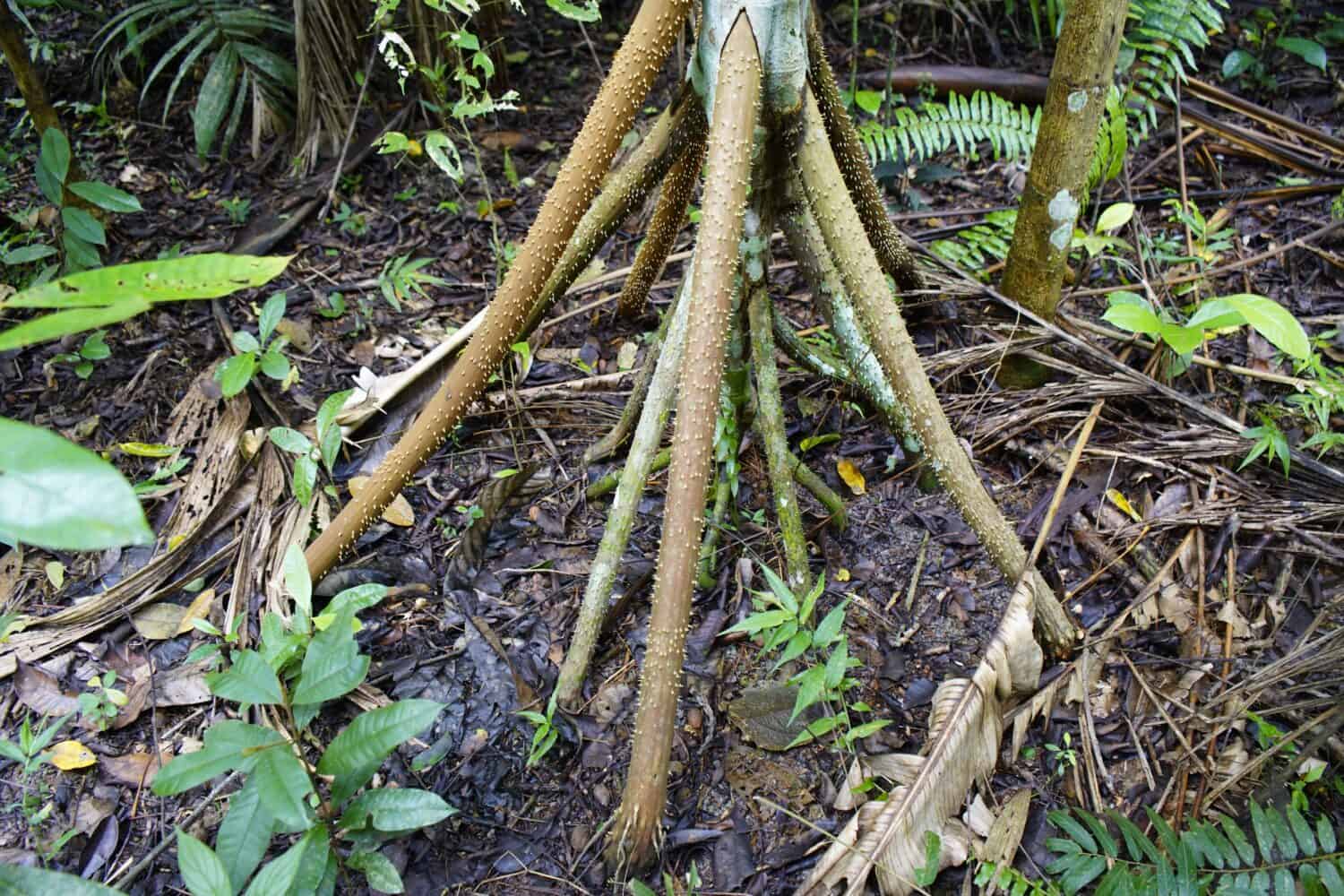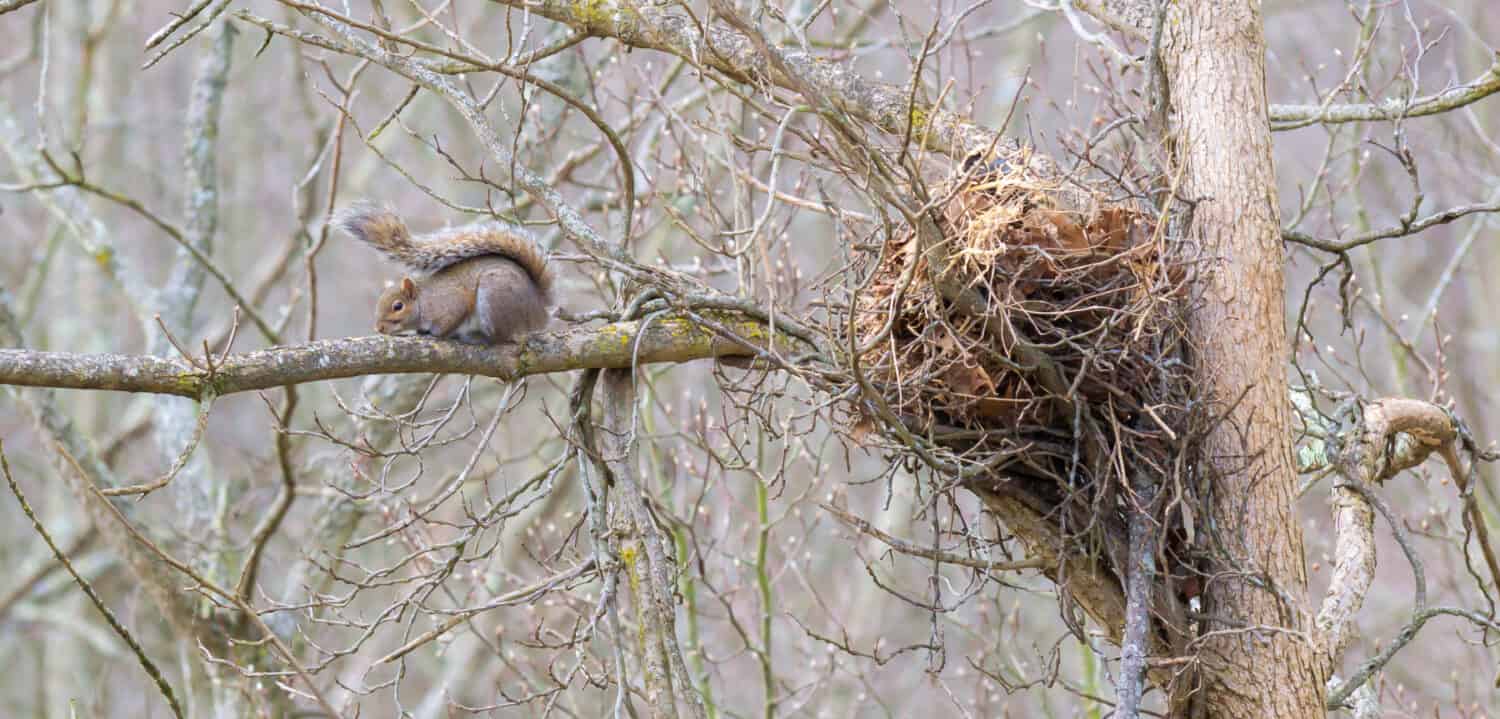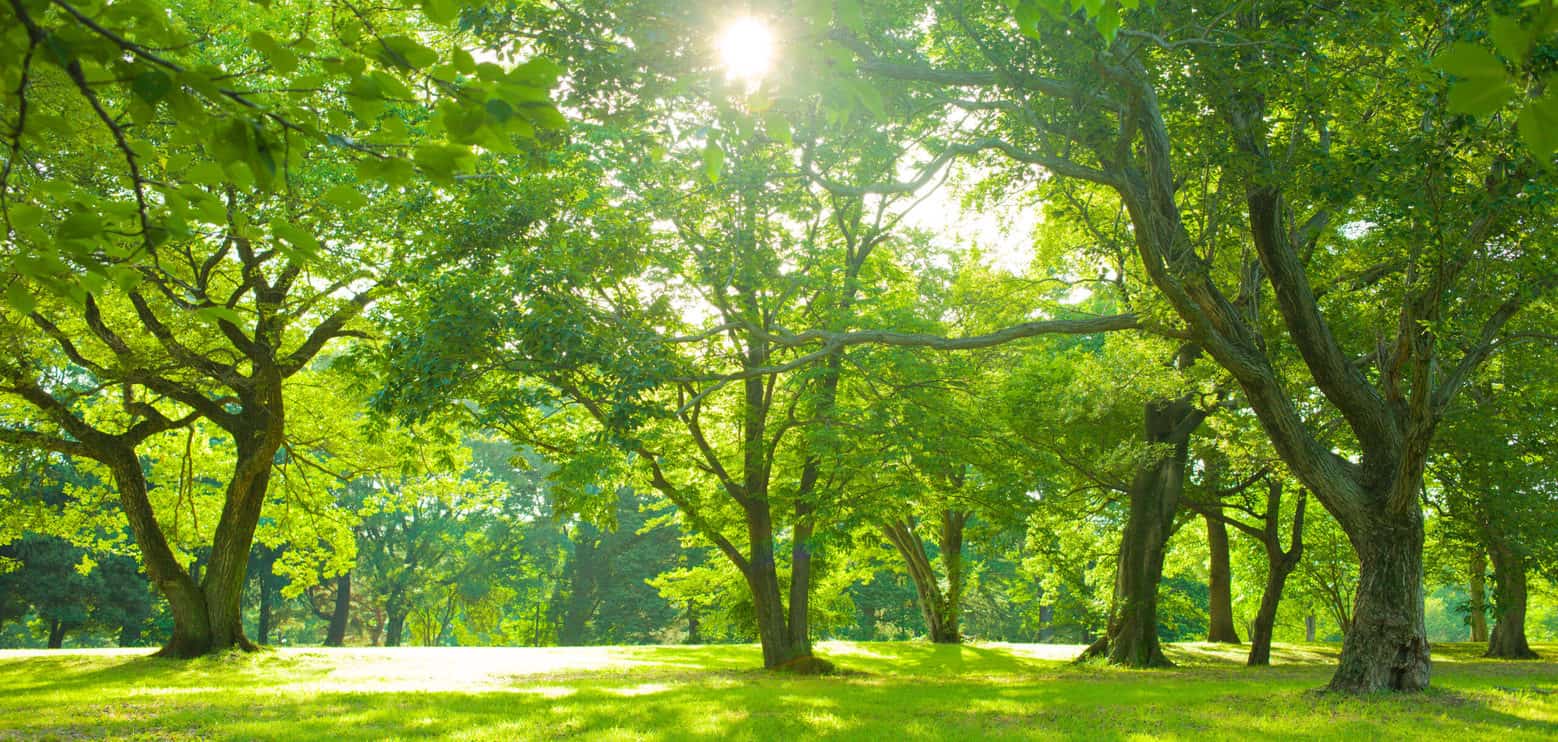Home>Gardening News and Trends>Latest News>Why Do Trees Move


Latest News
Why Do Trees Move
Modified: January 22, 2024
Stay updated with the latest news on why trees move. Discover fascinating insights and learn about the science behind this natural phenomenon.
(Many of the links in this article redirect to a specific reviewed product. Your purchase of these products through affiliate links helps to generate commission for Chicagolandgardening.com, at no extra cost. Learn more)
Table of Contents
Introduction
Moving trees may sound like a fantastical concept, but in reality, trees do possess the ability to move, albeit at a slow and imperceptible pace. While we commonly associate movement with animals, trees also have the remarkable capacity to adapt and respond to their surrounding environment.
So why do trees move? Understanding the factors influencing tree movement and the mechanisms that enable it can provide valuable insights into the resilience and adaptability of these majestic beings. It is a fascinating subject that highlights the interconnectedness of nature and the incredible ways in which living organisms continuously evolve to survive.
In this article, we will explore the factors affecting tree movement, the role of wind as a driving force, the mechanisms that enable trees to move, the importance of the root system, and how trees adapt to environmental factors. We will also discuss the implications and benefits of tree movement in the natural world.
Join us on this journey into the world of moving trees as we unravel the mysteries behind their graceful and purposeful motions.
Factors Affecting Tree Movement
Several factors influence the movement of trees, enabling them to adapt and respond to their environment. Let’s explore the key factors that contribute to tree movement.
1. Wind: Wind is a major driving force behind tree movement. As wind blows, it exerts pressure on the canopy and trunk, causing trees to sway and bend. The intensity and direction of the wind play a significant role in determining the magnitude and direction of tree movement. Trees in wind-exposed areas tend to have greater movement compared to those sheltered by surrounding vegetation.
2. Gravity: The force of gravity also contributes to tree movement. As trees grow taller, the weight of their canopy increases, exerting a downward force. Conversely, the roots provide stability and counterbalance the force of gravity. However, in certain situations, the combined effects of wind and gravity can lead to trees leaning or even toppling over.
3. Soil Conditions: The composition, texture, and moisture content of the soil impact tree movement. Loose or sandy soils offer less resistance and allow trees to move more easily, especially during strong winds. Conversely, compacted or clayey soils restrict movement, making trees more stable. Additionally, soil moisture affects the strength of the root system, influencing the tree’s ability to withstand movement.
4. Tree Species: Different tree species exhibit varying degrees of movement. Some species have flexible trunks and branches, allowing them to bend and sway more easily. Others have sturdy and rigid structures, limiting their movement. Factors such as wood density, branch flexibility, and growth habit contribute to the range of movement observed in different tree species.
5. Age and Health: The age and health of a tree can impact its ability to move. Younger trees tend to be more flexible and responsive to movement, while older and more mature trees may have sturdier structures but exhibit reduced movement capabilities. The overall health and vitality of a tree, including factors like disease or pest infestations, also affect its ability to adapt and respond to environmental changes.
These factors interact and influence each other, creating a dynamic system that determines the movement patterns of trees. By understanding these factors, we can gain deeper insights into the fascinating phenomenon of tree movement.
Wind as a Driving Force for Tree Movement
When we think of tree movement, wind is often the first factor that comes to mind. The force of the wind plays a crucial role in shaping the movement patterns of trees and is a significant driving force behind their motion. Let’s delve into how wind influences tree movement.
Bending and Swaying: As the wind blows, it exerts pressure on the surface area of the tree’s canopy and trunk. This force causes the tree to bend and sway in the direction of the wind. The flexible nature of trees, with their slender trunks and branches, enables them to absorb and dissipate the energy generated by the wind, reducing the risk of breakage.
Wind Speed and Direction: The intensity and direction of the wind impact the magnitude and pattern of tree movement. Strong winds exert greater force on trees, resulting in more pronounced bending and swaying. The direction of the wind also influences the orientation of the tree’s movement. Trees tend to sway more in the direction opposite to the wind, as they are pushed and then return to their original position when the wind subsides.
Wind Exposure: The degree of exposure to wind significantly affects tree movement. Trees growing in open, wind-exposed areas experience greater movement compared to those located in sheltered areas or surrounded by other vegetation. This exposure leads to increased flexibility and adaptability in trees, as they continually adapt to the windy conditions.
Wind Load: The wind load, or the force exerted by the wind on the tree, depends on several factors, including wind speed, tree height, canopy density, and tree species. Taller trees with denser canopies experience higher wind loads, which can result in more pronounced movement. The ability of a tree to withstand wind loads relies on its structural strength, root anchorage, and flexibility.
Wind-Induced Vibrations: In addition to bending and swaying, trees can also undergo wind-induced vibrations. As the wind passes through the branches and leaves, it creates oscillations within the tree. These vibrations can be observed as slight trembling or shaking and help dissipate the energy generated by the wind, reducing stress on the tree’s structure.
Wind is a formidable force capable of shaping the movement and growth of trees. It acts as both a stressor and a catalyst for adaptive responses, ultimately influencing the resilience and survivability of trees in various environmental conditions.
Mechanisms that Enable Trees to Move
Trees possess remarkable mechanisms that enable them to move and adjust to their surroundings. These mechanisms work in harmony to ensure the stability, flexibility, and adaptability of trees. Let’s explore the key mechanisms that enable trees to move.
Flexible Trunk and Branches: One of the primary mechanisms that allow trees to move is their flexible trunk and branches. The woody tissues in trees have a remarkable ability to bend and sway in response to external forces, such as wind. This flexibility helps dissipate the energy generated by the wind, reducing the risk of breakage. The degree of flexibility varies among tree species, with some exhibiting more pliable structures than others.
Dynamic Allocation of Resources: Trees have the ability to allocate resources dynamically to different parts of their structure, enabling them to adapt to movement. When a tree experiences bending or swaying due to wind or other external forces, it redistributes resources such as water, nutrients, and carbohydrates to reinforce the areas experiencing the most stress. This dynamic allocation of resources helps maintain the structural integrity of the tree and optimize growth in response to movement.
Elasticity and Viscoelasticity: Trees possess unique properties of elasticity and viscoelasticity that contribute to their ability to move. Elasticity refers to the capacity of a material to regain its original shape after being deformed. Trees can undergo temporary deformation while being subjected to external forces, and once the force is removed, they return to their original shape. Viscoelasticity is the time-dependent property of materials to exhibit both elastic and viscous behavior. It allows trees to absorb and dissipate energy over extended periods, reducing the risk of damage during prolonged periods of wind or movement.
Growth and Development: The growth and development of trees play a significant role in their ability to move. Trees exhibit a phenomenon known as thigmomorphogenesis, which is the ability to respond and adapt to mechanical stimuli. As trees experience movement or physical contact, their growth patterns can change in response. For instance, increased movement can lead to shorter, thicker trunks and more flexible branches, allowing for better resistance against wind and other forces.
Branch Oscillations and Damping: Branches of trees can undergo oscillations when subjected to wind. These oscillations involve both bending and twisting movements. The specific frequency at which branches oscillate depends on their length, stiffness, and mass. By controlling the frequency of branch oscillations, trees can effectively dissipate energy and reduce stress on their structure, thus preventing potential damage.
The combination of flexibility, resource allocation, elasticity, growth responses, and oscillations enables trees to adapt and move according to the demands of their environment. These mechanisms highlight the extraordinary ability of trees to navigate the challenges posed by external forces while maintaining their integral form.
Role of Root System in Tree Movement
While the above-ground parts of a tree may capture our attention when we think about movement, the root system plays a crucial role in supporting and enabling tree movement. The root system not only anchors the tree in place but also facilitates its ability to adapt and respond to various environmental factors. Let’s explore the role of the root system in tree movement.
Anchorage and Stability: The primary function of the root system is to provide stability and anchorage for the tree. The roots penetrate into the soil, anchoring the entire structure firmly. This anchorage is essential for withstanding movement caused by wind, gravity, or other external forces. A strong and extensive root system ensures that the tree remains upright and secure, minimizing the risk of uprooting or toppling during intense wind events.
Root Flexibility: While roots are vital for stability, they also possess a degree of flexibility. The flexibility of root systems allows them to adapt to the movement and fluctuations in the soil. As the tree sways or experiences movement, the roots can flex and adjust their position to maintain stability. This dynamic flexibility helps distribute forces evenly and reduces strain on any particular part of the root system.
Water and Nutrient Absorption: The root system serves as the primary organ for water and nutrient absorption from the soil. The efficient uptake and transport of water and nutrients are vital for the overall health and growth of the tree. During movement, the root system ensures a continuous supply of water and nutrients to all parts of the tree, facilitating its ability to adapt and respond to changing environmental conditions.
Interaction with Soil: The interaction between the roots and the soil contributes to the tree’s ability to move. The root system forms a complex network that interacts with the soil particles, creating both friction and cohesion. This interaction provides stability and resistance to movement. Additionally, the root system can redistribute its weight and adjust its position in response to changes in soil conditions, optimizing anchorage and stability.
Root Reinforcement: In some tree species, the root system can produce specialized structures called buttress roots. Buttress roots grow in a flared shape at the base of the trunk and provide additional support and reinforcement against movement. These roots increase the contact area with the ground, distributing the weight of the tree and enhancing its stability. Buttress roots are often found in trees growing in nutrient-poor soils or areas prone to strong winds.
The root system is the hidden hero that underpins the movement and stability of trees. Its ability to anchor, flex, absorb water and nutrients, interact with the soil, and even produce specialized structures demonstrates the critical role that roots play in enabling trees to adapt and thrive in their environment.
Tree Movement Adaptations in Response to Environmental Factors
Trees have evolved various adaptations to enable them to withstand and respond to environmental factors that can impact their movement. These adaptations allow trees to better survive and thrive in different conditions. Let’s explore some of the notable tree movement adaptations in response to environmental factors.
Wind-Resistant Structures: Trees growing in windy areas have developed structural adaptations to withstand strong gusts. For instance, some tree species have more flexible trunks and branches, allowing them to bend and sway with the wind. Additionally, trees may have a tapered or conical shape, minimizing wind resistance and reducing the risk of toppling over. These wind-resistant structures allow trees to adjust their movement and reduce the risk of damage during turbulent weather conditions.
Thigmomorphogenesis: Thigmomorphogenesis refers to the ability of trees to modify their growth patterns in response to mechanical stimuli. When exposed to wind or movement, trees adjust their growth rates and alter their development. This adaptation results in stronger, shorter trunks, more flexible branches, and denser wood, enhancing their ability to withstand movement and resist damage.
Deep Root Systems: In response to water scarcity or unstable soil conditions, some trees develop deep root systems. Deep roots penetrate into the soil, allowing the tree to access groundwater sources and provide better anchorage. This adaptation stabilizes the tree, reducing the risk of uprooting during movement and ensuring a continuous supply of water even in dry and arid environments.
Reaction Wood Formation: Reaction wood, also known as stress wood, is formed by trees in response to leaning or tilting. It is a specialized type of wood that grows on the side opposite to the direction of the leaning. Reaction wood helps the tree restore its vertical position and maintain stability. In angiosperms, tension wood is formed on the upper side, pulling the tree back towards an upright position. In gymnosperms, compression wood is formed on the lower side, pushing the tree back to an upright position.
Deciduous Trees and Dormancy: Deciduous trees have adapted their growth patterns to align with seasonal changes. During winter, when environmental conditions are harsh and movement is more severe, deciduous trees shed their leaves and enter a state of dormancy. This adaptation conserves energy and protects the tree from potential damage. In spring, when conditions improve, deciduous trees resume growth, utilizing stored energy and adapting to the renewed movement.
Adaptive Phenotypic Plasticity: Trees exhibit phenotypic plasticity, the ability to alter their physical characteristics in response to environmental signals. This plasticity allows trees to adjust their growth patterns, branch development, and leaf characteristics to optimize their response to movement-inducing factors. The ability to adapt and exhibit phenotypic plasticity enables trees to thrive in diverse environments and ensure their survival despite varying movement demands.
These adaptations showcase the remarkable strategies that trees have developed to cope with environmental factors and enable movement. By evolving these mechanisms, trees are able to withstand and thrive in a wide range of conditions, emphasizing their resilience and ability to adapt.
Implications and Benefits of Tree Movement
The movement of trees has significant implications and benefits in both ecological and practical contexts. Understanding and appreciating these implications can help us recognize the value and importance of tree movement in our environment. Let’s explore some of the key implications and benefits of tree movement.
Ecological Stability: Tree movement plays a crucial role in maintaining ecological stability. As trees sway and bend in response to wind and other forces, they help dissipate energy and reduce the impact on their structure. This enables trees to withstand storms and turbulent weather conditions, minimizing damage to their ecosystem and providing stability for other organisms that rely on them for habitat and resources.
Pollination and Seed Dispersal: Tree movement aids in pollination and seed dispersal. When trees sway in the wind, it facilitates the dispersal of pollen from male to female flowers, promoting cross-pollination and genetic diversity. Similarly, the movement of tree branches and canopy allows for the dispersal of seeds to new locations, enhancing the tree’s ability to colonize new areas and propagate its species.
Nutrient Cycling and Soil Health: Tree movement plays a role in nutrient cycling and soil health. As trees move and sway, they shed leaves, branches, and other organic matter, contributing to the nutrient content of the soil. This process, known as litterfall, helps enrich the soil, providing essential nutrients for other plants and microorganisms. The movement of tree roots also aids in soil aeration, allowing for improved water and nutrient absorption, as well as the breakdown of organic matter by soil organisms.
Carbon Sequestration and Climate Regulation: Moving trees are efficient at sequestering carbon dioxide from the atmosphere and mitigating climate change. As trees undergo movement, they continue to photosynthesize, converting carbon dioxide into oxygen and storing carbon in their biomass. The continuous movement and growth of trees enable them to act as carbon sinks, reducing the concentration of greenhouse gases in the atmosphere and playing a vital role in mitigating climate change.
Aesthetic and Recreational Value: The movement of trees adds to the visual appeal and aesthetic value of our surroundings. Watching trees sway gracefully in the wind can evoke a sense of tranquility and connection to nature. Furthermore, tree movement creates opportunities for recreational activities such as tree climbing, birdwatching, and photography, enhancing our enjoyment and appreciation of the natural world.
Wood and Timber Production: Tree movement contributes to the quality of timber and wood products. Trees that experience natural movement tend to have denser and stronger wood with improved structural properties. This enhanced wood quality makes them valuable resources for construction, furniture making, and various other industries that rely on wood products.
The implications and benefits of tree movement extend far beyond aesthetics and visual appeal. They play a vital role in maintaining ecological balance, supporting nutrient cycling, climate regulation, and providing resources for various human activities. Recognizing and valuing tree movement is essential for conservation efforts and sustainable management of our natural resources.
Conclusion
The movement of trees, though often unnoticed, is a fascinating phenomenon that showcases the resilience, adaptability, and interconnectedness of the natural world. Trees have evolved remarkable mechanisms to respond and adjust to environmental factors such as wind, gravity, and soil conditions. Their flexible trunks, dynamic resource allocation, deep root systems, and other adaptations enable them to withstand movement and continue to thrive.
Understanding the factors influencing tree movement, the role of wind as a driving force, and the mechanisms that enable trees to move provides valuable insights into their ability to navigate and survive in changing environments. The root system plays a vital role in providing stability, anchorage, and flexibility, contributing to the overall movement capabilities of trees.
Tree movement has widespread implications and benefits. Ecologically, it promotes stability, aids in pollination and seed dispersal, and supports nutrient cycling and soil health. Trees also play a vital role in carbon sequestration, climate regulation, and mitigating climate change. Additionally, their movement adds aesthetic value to our surroundings and provides recreational opportunities. Trees that move also yield strong and durable wood, making them valuable resources for various industries.
Appreciating the significance of tree movement is crucial for conservation efforts and sustainable management of our natural resources. By recognizing the dynamic nature of trees and their role in maintaining ecological balance, we can foster a deeper connection with the natural world and work towards a more sustainable future.










